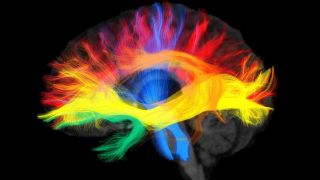KEY POINTS
- Beat deafness is the inability to identify or move your body in time with rhythm in music.
- The disorder occurs in only about 3 percent of the population.
- Beat deafness is associated with other conditions, like dyslexia and a reduced ability to pay attention to other people.
There was just one problem: He had absolutely no rhythm.
Profiled in a 2011 study from the University of Montreal, Dion was the first person to be officially diagnosed with beat deafness.
“I just can’t figure out what’s rhythm, in fact,” Dion said in an interview with NPR. “I just can’t hear it, or I just can’t feel it.”
Beat deafness is the inability to identify – or move your body in time with – rhythm in music. There’s more to it than just having two left feet; even terrible dancers can usually bounce or clap along with the beat.
Dion, on the other hand, is not only incapable of synchronizing his own movements with music, he’s also unable to tell whether other people are dancing on or off beat. He even struggles to distinguish between a two-count march tempo (“ONE, two; ONE, two…”) and a three-count waltz tempo (“ONE, two, three; ONE, two, three…”).
What causes beat deafness?
The exact causes of beat deafness aren’t yet known. Moving in time with music may feel simple to most people, but it requires the perfect functioning of a variety of different brain areas, from the auditory cortex that processes sounds to the motor cortex that controls movements. Individuals who are beat deaf typically score within the normal range on hearing tests and are able to tap out their own consistent rhythm in the absence of music, indicating they have no generalized hearing or movement impairment.
Instead, there are two possible reasons a person can be beat deaf: Either they can’t perceive the beat in the first place or they can’t match their movements to the rhythm they hear. The first problem would likely arise from a malfunction in the connection between the auditory cortex, where sound information arrives in the brain, and the frontal lobes, where sounds are analyzed and categorized. The second would be the result of a deficit in auditory-motor mapping, a miscommunication between the auditory and motor regions of the brain that prevents a person from translating the sound they hear into a matching movement.
Not being able to keep time on the dance floor may not sound like a big problem in the scheme of things, but beat deafness may lead to other challenges.
Rhythm is all around us. Boaters use rhythm to row, soldiers use rhythm to march, even children use rhythm to jump rope and play hopscotch. Language also relies heavily on rhythm for everything from organizing speech sounds to coordinating turn-taking in conversation. The majority of people who are beat deaf also report dyslexia, and children who struggle to keep a beat have trouble tracking speech syllables.
On a more fundamental level, researchers at Dartmouth College have now found a link between the ability to tune in to rhythm and the ability to tune in to other people’s ideas. The participants in the new Dartmouth study who were best at coordinating with a beat also paid the closest attention when listening to a storyteller. The two skills may be related because both require a sensitivity to structure — an ability to predict and respond to what might be coming next.
This capacity to synchronize with others has advantages and drawbacks. On the up side, it supports social bonding and the transmission of information. On the down side, when a person identifies with someone else’s thoughts and feelings to the exclusion of their own, it can lead to codepndent behavior or a mob mentality. There are probably benefits to having both low-synchronizers and high-synchronizers in a society.
How to tell if you’re beat deaf
Beat deafness isn’t very common, and many people who think they lack rhythm just lack experience; they feel awkward when they try to play music or dance because they haven’t had enough practice. The researchers who studied Mathieu Dion tested dozens of people who believed themselves to be beat deaf, but only Dion turned out to have the condition. The current estimate is that about 3.1% of the population is actually unable to perceive rhythm.
For a simple at-home test, try tapping along with a song while a friend watches you and ask them to tell you when the song ends whether you were on beat. Don’t let them tap along: Many people who are beat deaf can stay on track when they’re following someone else’s lead.
And if you find that you are beat deaf? Remember that marching to the beat of your own drummer has its advantages, like a lower susceptibility to groupthink.













